How To Get The Best Coverage for the Best Price…
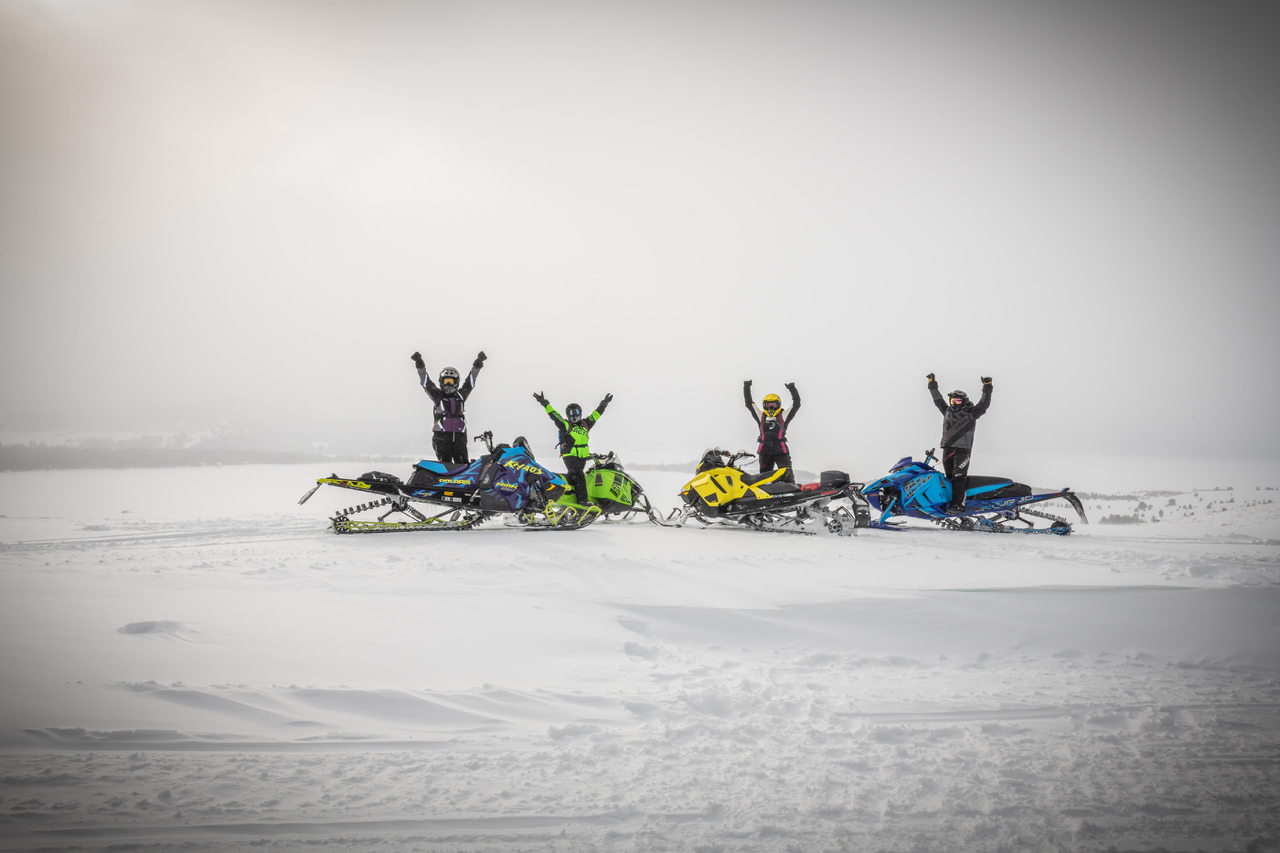
Photo courtesy of ISMA
Related: Insurance Claim No-No’s
Why do we need snowmobile insurance buying tips? Because I cringe at social media posts from experienced snowmobilers and beginners asking: “Where can I find the cheapest sled insurance?” For today’s crazy world, a much better question is: “Where can I get the best coverage for the best price?”
Why You Need Snowmobile Insurance Buying Tips
Take It Seriously
For some reason, many snowmobilers treat snowmobile insurance like it’s separate from the rest of our lives. Maybe that’s because snowmobiling is our escape from daily reality. Perhaps it’s because we don’t treat our toys seriously. Or being a seasonal purchase, maybe sled insurance just plays second fiddle in our overall insurance picture. Also, I guess it’s human nature to assume that nothing bad will ever happen to us. Whatever the case, most of us don’t take our snowmobile insurance seriously enough.
Sure, we spend a relatively small amount of our lives sledding. Al least compared to everything else we do. And it irks us to pay what may seem too high a premium for our few hours of fun on the snow. But would we still feel that way after tragedy struck while snowmobiling?
Catastrophic Outcomes
Most of us arrive home safely after every ride. In Ontario, almost 200,000 of us typically ride a cumulative total of over 150 million kilometres in a normal winter without serious incident. That’s not a bad track record. Unfortunately, when something goes wrong while sledding, the outcome can be very bad. Snowmobiles don’t offer much protection. Sleds don’t stop very quickly on snow and ice. Trees and rocks aren’t very forgiving. Bodies are soft and vulnerable. And we’re often a long way from help.
The long and short of it is that too many snowmobile-related tragedies are catastrophic. And catastrophic = expensive. Catastrophic = life changing. Catastrophic = financial disaster.
Risk Reality
But all can be survivable if you have good insurance after you’ve bought a new sled or a used one. Good sled insurance can help restore your life and health. It can take care of your bills, your loved ones and your future. It can give you peace of mind. On the other hand, inadequate sled insurance can make what is already a catastrophe much, much worse. And it’s too late to change after the fact. Yes, snowmobiling has inherent risks, as with any other powersports activity. But don’t compound your risk by ignoring good sled insurance. Snowmobiling’s not supposed to be that much of a crapshoot!
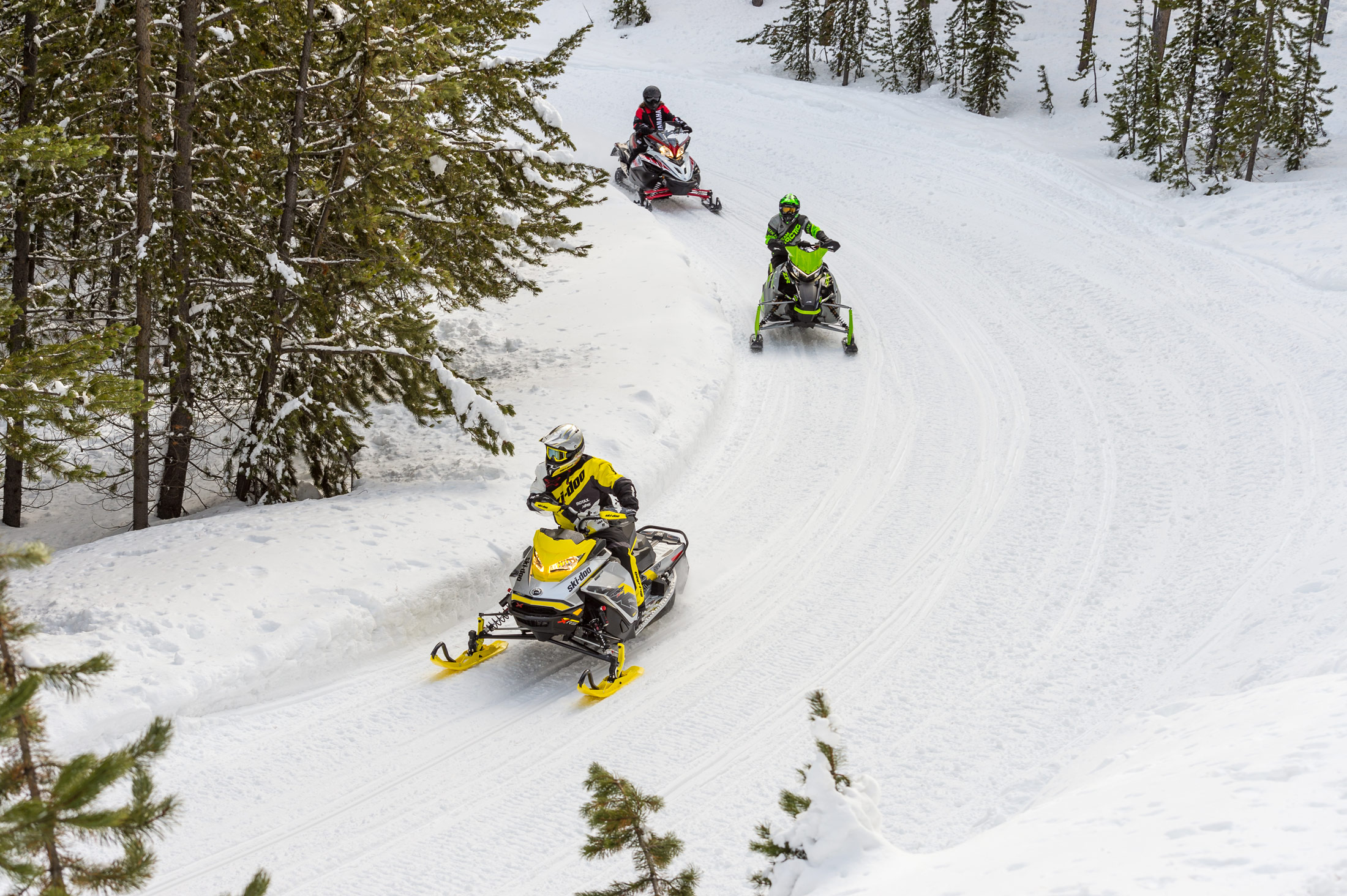
Photo courtesy of ISMA
Sled or Body?
So snowmobilers need to understand one key sled insurance basic. And that is: your snowmobile is actually your least important asset. In the greater scheme of things, the price tag to repair or replace your sled is minimal.
A far more precious asset is your body. It’s irreplaceable. And repairing it can be incredibly expensive, to say nothing of very time consuming. You can bet that the costs of doing so will be much, much more than the cost of one measly sled.
Think about it. Your top priority should be your body, not your sled. With a functioning body, you can earn a living, take care of your loved ones, pay your bills, protect your other assets, and save for your future. But unless you’re already wealthy, the huge cost of restoring your body after a snowmobiling mishap can jeopardize your entire financial future. And that’s why your top priority for sled insurance should be having the right coverage to protect the life you want to live. See Accident Benefits below.
Snowmobile Insurance Buying Tips Comparison
Buying good snowmobile insurance isn’t cheap. But it can be affordable. Many snowmobilers also insure other motorized recreational vehicles. So much of the foregoing perspective also applies to these other seasons and their products. That’s why it’s interesting to compare the cost of sled insurance to popular vehicles like personal watercraft, ATV’s and motorcycles.
This is not easy. The answers depend on many variables such as driving record, age, place of residence and multi-line discount. But take the average male Ontario snowmobiler. Let’s call him “Norm”. Norm is age 41, a married, claims-free homeowner with two automobiles and a decent driving record. Here’s about what Norm would be paying* for full coverage insurance for the following 2020 units:
- Snowmobile (600cc) listed = $435
- Motorcycle (non Harley-Davidson) listed = $800 – $1000
- PWC (155hp) = $425
- ATV (600cc) = $450
*These prices are for demonstration purposes only. They are not insurance quotes.
As you can see, insuring a snowmobile is neither the most expensive nor the cheapest. Obviously, prices will vary somewhat company to company and according to individual circumstances. But the main point is that insuring your sled is typically in the same general ballpark as other motorized vehicles.
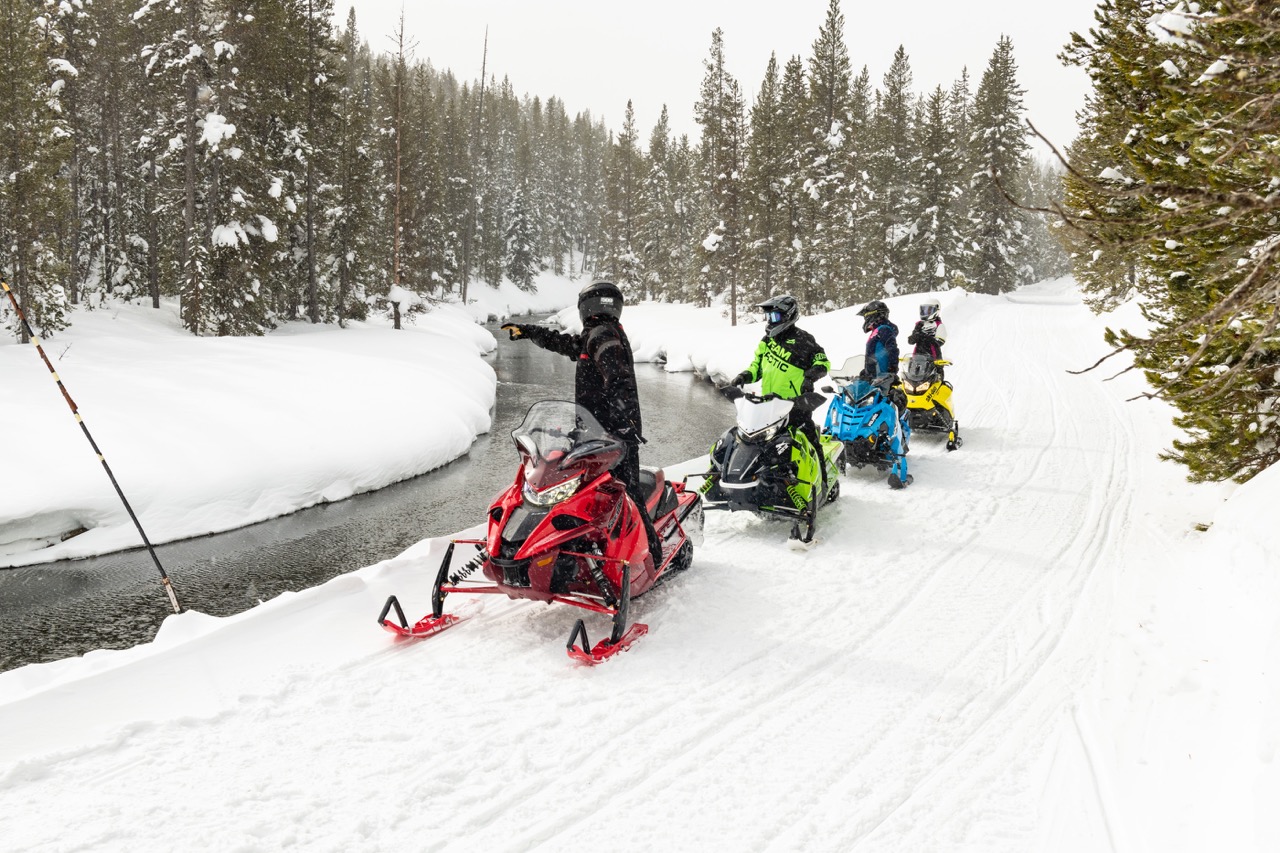
Photo courtesy of ISMA
Get The Answers
So before shopping for snowmobile insurance in Ontario, what are some of the questions you need answered? Note that some of the following information may differ in other jurisdictions depending on their own laws and insurance regulations. But many snowmobile insurance buying tips remain similar, so read on…
Q: Why not buy the cheapest snowmobile insurance available?
A: Assuming you can still find “cheap” sled insurance, it often has inadequate coverages and settlement options. These can come back to haunt you in time of need. What good is cheap if it doesn’t do the job for you when tested? If you have a relatively affluent lifestyle and/or a family that depend on you, why scrimp on the only thing that can restore it for you if trouble strikes?
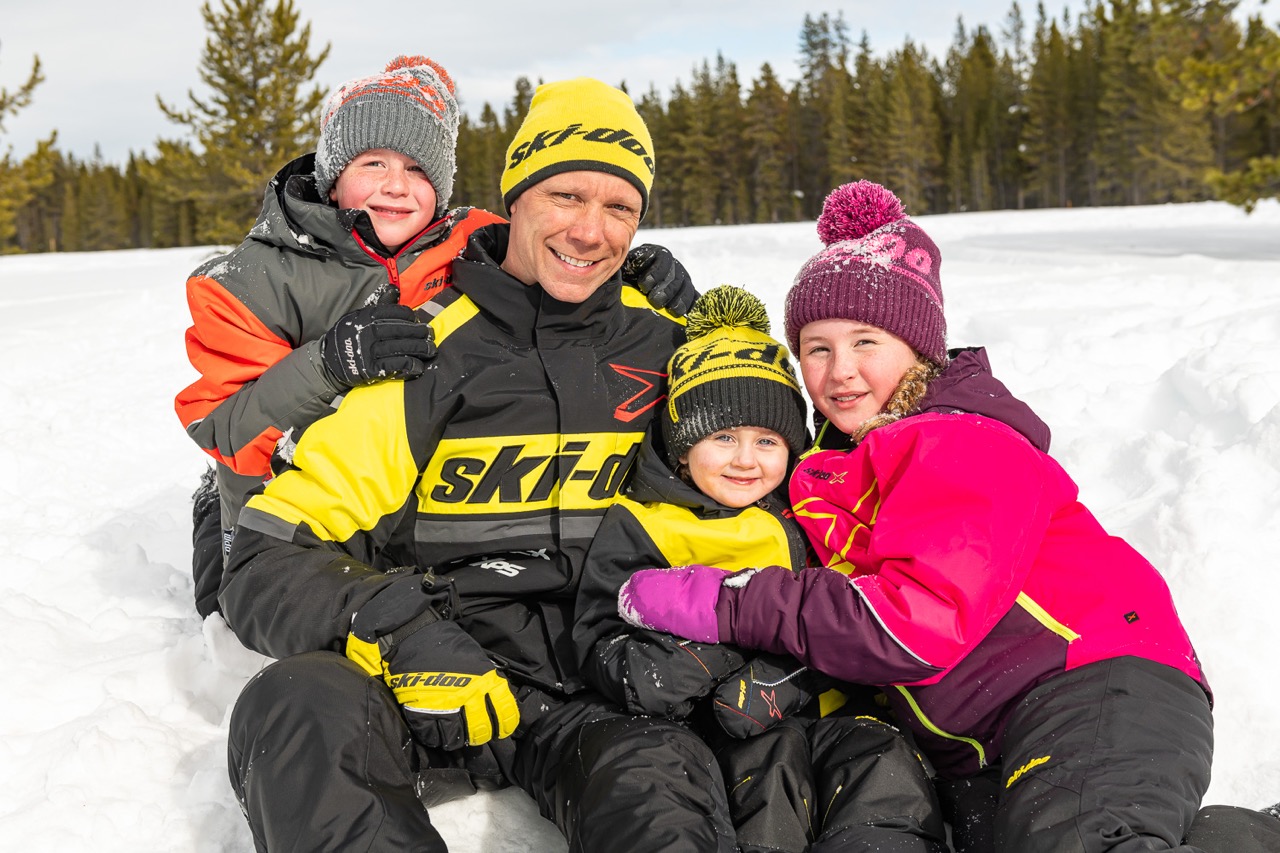
Photo courtesy of ISMA
Q: Do I have to buy snowmobile insurance in Ontario?
If you are an Ontario resident who owns a snowmobile, the law requires you to insure it. Also, there are some other considerations:
- Private Property: Sled insurance is not required to operate a snowmobile on the private property of the snowmobile’s owner.
- For riders 16 years of age or older: The following are necessary to drive a snowmobile across a road, on roadways, and on trails. You need a valid driver’s licence, or motorized snow vehicle operator’s licence, or a licence from another jurisdiction that allows you to drive a snowmobile.
- For riders 12 years to 16 years of age: The following are necessary to drive a snowmobile on a trail. You need a valid motorized snow vehicle operator’s licence, or a licence from another jurisdiction that allows you to drive a snowmobile. A legally licensed adult must also accompany you, who also must drive your sled when riding or crossing a roadway.
- Other Jurisdictions: The sled insurance you buy in Ontario will cover you while riding in other provinces. But don’t expect the liability insurance that automatically comes with a Quebec permit to cover you outside of that province. Or with the same coverages available in Ontario.
Q: Why are fewer companies offering snowmobile insurance?
A: Canada is becoming a more expensive place for insurance. We are an increasingly litigious society, more like the U.S. Nowadays, everyone seems to sue everyone else for anything at the drop of a hat. Today, many lawyers earn more revenue from lawsuits because more people are looking for someone else to pay compensation. That’s why we’re seeing so many road signs and ads for personal injury lawyers.
Within this context, snowmobiling has a very high-risk factor for ultra-expensive claims. More often than not, the severity of damage to property and or person while snowmobiling far outweighs the premium that was charged. So many insurance companies view it as a losing proposition.
Q: What’s makes snowmobiling unattractive to most insurers?
A: First, snowmobiling is a small market within powersports. What’s more, powersports is a drop in the bucket compared to auto and home insurance. Also, the premiums for sleds are lower, but incur much of the same level of administrative care and cost as sectors with higher premiums. And as already indicated, payouts on sled claims can be substantial, but without being offset by these higher premiums. So with the sledding market smaller and less lucrative, fewer insurers are willing to take the time or trouble to truly understand what’s involved.
Second, like all motorized recreational activities, snowmobiling has more inherent risks. It involves in a more unpredictable, uncontrollable, natural off-road setting than your home or even your automobile.
Third, too many normally responsible drivers seem to make foolish mistakes or take unnecessary risks while sledding. And when their poor choices lead to trouble, they expect someone else to compensate them. Instead of assuming responsibility for their own misguided actions. And remember, when a sled or a snowmobiler gets into trouble, it’s more likely to result in a catastrophic, expensive claim. That’s why riding like a pro is so important!
Q: What’s the difference between stand-alone sled insurance and adding your sled to an existing policy?
A: Regardless of which approach you take in Ontario, your sled is covered on an automobile policy. So a stand-alone sled insurance policy will have all the same insurance rules, regulations and coverages as if you had insured your automobile. Some riders seem to think they can keep their respective driving records secret and separate by purchasing two different policies from two different insurers. But that just isn’t the case.
So if you add a snowmobile to your existing automobile insurance, its policy wording will automatically apply to your sled as well. And if you’re a good customer with a reasonable driving and claims record, you’re more likely to get a decent rate on your sled. Plus, assuming that you’ve done your homework to purchase the best possible coverage on your automobile, that’s also what you’ll get for your sled.
However, if you buy stand-alone sled insurance, you’re starting from scratch with a totally new policy.
Policy Comparisons
So you’ll need to pay very close attention to what coverages are included. Also, those that are specifically excluded, like are you allowed to take your sled outside of Ontario? For example an Ontario auto policy covers North America. But you may only be allowed to have your vehicle (or sled) outside of the province between 90 -120 days, depending on the insurer. Also, some policies will cover teen riders, but others may not.
Typically, stand-alone policies are stripped down to the barest basics. They provide minimal coverages. Sometimes, stand-alone policies are also priced at what’s known in the industry as “facility rates”. Facility means insurance of the last resort that’s typically the most expensive. That’s because its customers can’t buy insurance anywhere else due to poor driving of claims records. Finally, in keeping with stand-alone’s no frills approach, it’s mostly sold either online or through impersonal call centres to cut costs. Either way, it’s hard to be sure you’re getting all the information you need or the right answers to suit your needs. And good luck getting much personal attention if you ever have to file a claim.
The Broker Advantage
That’s why I prefer to do my insurance business through a broker with whom I’ve developed a longstanding and trusting relationship. Brent Murphy of Murphy Insurance handles my entire insurance portfolio, both personal and business. In fact, Brent is also a fellow snowmobiler. So his added value is understanding my needs as a rider. He provides me with a complete explanation of the minimum coverages required by law for my sled insurance. Also about optional coverages that I should consider. And any changes along the way that I need to know. Finally, Brent helps ensure that I have the best overall coverage for my lifestyle, family and situation.
You just can’t get this kind of personal attention, advice and advocacy online or from a call centre. So I strongly recommend finding a broker who will be there for you from start to finish. This person will be your professional advisor and advocate, so that your insurance works for you.
That’s why I think a better alternative to stand-alone is to use a broker who can leverage your buying power. For instance, Brent has connected me with Unica Insurance. It’s a great Canadian company willing to insure snowmobiles as part of a multi-line portfolio (i.e. bundled with car, home, etc.). When I put all my insurance with Unica, I benefitted from multi-line discounts. Also, from a company that measures its risk against a bigger picture.
Q: What is this bigger picture?
A: Focusing solely on your snowmobile insurance can be a serious mistake. A sledding loss can impact the future of everything you love, own and do. That’s why it’s important to take the time up front to get it right. To get the best possible advice from a professional broker about how to properly align all of your various insurance needs. This is the bigger picture. Remember, a claim can show itself in many forms, from physical loss of your property to loss of income and loss of life. Getting properly covered across the board insulates you from losing the lifestyle and assets you have worked so hard to achieve.
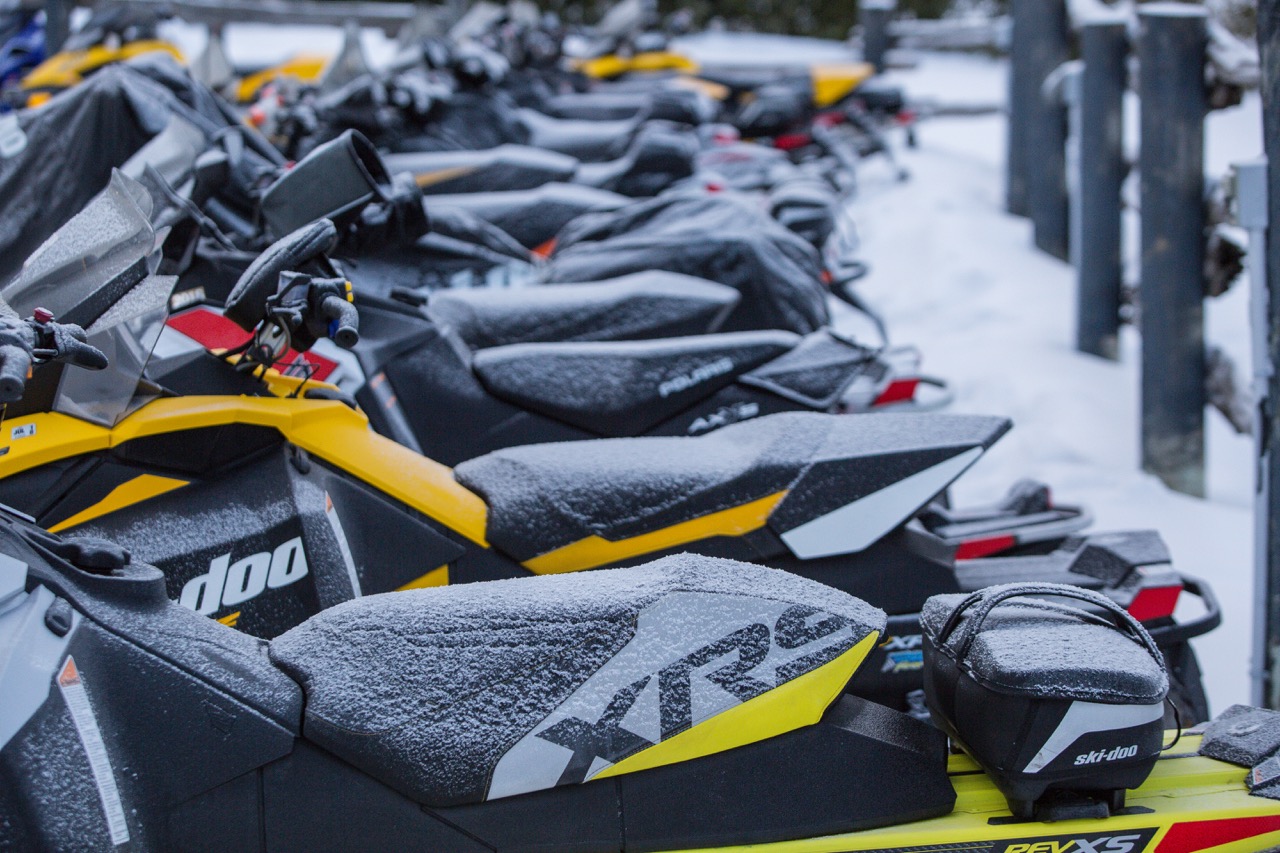
Q: What are the typical coverages available for snowmobile insurance?
A: There are four broad areas of coverage you need to be familiar with when shopping for sled insurance.
Liability Coverage
This coverage protects you from bodily injury and property damage to a third party due to your actions (minimum $1 million).
Accident Benefits
If you get hurt or killed while snowmobiling, Accident Benefits pay for repairing you, however long that takes. They can also pay to help keep your life liveable if you become permanently disabled. And Accident Benefits can pay to provide your loved ones with financial security into the future if you are gone.
So making sure you have good Accident Benefits is crucial. Especially given surveys show many snowmobilers have greater incomes and more assets than the average wage earner. Ontario sets standard Accident Benefits. They are automatically included when you buy an automobile or snowmobile policy. These standard benefits are minimums, such as $400 per week for income replacement. But $400 won’t go far if you’re used to bringing in $1,000 a week or more, will it?
There are five other Accident Benefits to consider. The standard offering for each may also be considerably lower than what you really need. But you must make the benefit upgrades for both auto and sled before anything untoward happens. Otherwise, you may be stuck not ever having enough money after tragedy strikes while sledding.
In my experience, coordinating your Accident Benefits for both auto and sled within the same policy is less confusing and easier for you to compare. Yes, upgraded benefits will cost you a little more. That’s the primary reason cheap sled insurance isn’t in your best interest. All you’re likely to get for cheap is a policy that covers the machine itself (collision, fire & theft) with the minimum standard benefits. But the costs related to repairing or replacing the sled itself are miniscule compared to other potential costs you may incur as the result of an accident. And this is when the right benefits are majorly important.
Collision Coverage
Subject to your deductible, this coverage will help repair or replace your sled that may result from an incident.
Comprehensive Coverage
Subject to your deductible, this coverage will help repair or replace your sled in the event of fire, theft and vandalism.
Note that several other coverages are available. And that smart riders choose to carry greater coverage than required by law to better protect themselves from financial risk.
You may be able to buy your sled insurance cheap. But just make sure that your cheaper premium isn’t scrimping on any of these coverages. After tragedy strikes is a lousy time to discover loopholes, inadequacies or inferiorities in the policy you’re relying on to restore your way of life.
Q: What can I do to keep my snowmobile insurance more affordable?
A: Many factors play a role in determining the cost of your sled insurance. Your age, type of sled, engine size, age of sled you own and/or any history of sled accidents/losses. Here are a few snowmobile insurance buying tips to help make your sled premium as affordable as possible:
- Shop Around: Solicit several quotes and compare what coverages and exclusions each provides. Make sure you’re not comparing apples to oranges. If this boggles your mind, that’s another reason to find a good broker.
- Be A Safe Rider: The best insurance rates are assigned to those with a clean record when it comes to snowmobile accidents/losses. So be sure to reduce your sledding risks as much as possible.
- Increase Your Deductible: Deductible applies when you make a claim because you’ve been in an accident or your sled was damaged. You usually pay a small portion of the claim first, then your insurance company pays the remainder. The portion you pay is called your deductible. A higher deductible translates to a lower premium in recognition of your assuming more of the risk.
- Bundle Your Insurance: This means packaging your sled with your house, car, cottage and/or other possessions. In so doing, you will benefit from reduced premiums through discounts, such as multi-line discounts and/or multi-vehicle discounts.
With good sled insurance in place, you can relax and enjoy your time on Ontario’s snowmobile trails, confident that you’re fully covered no matter what happens. What’s that worth to you?
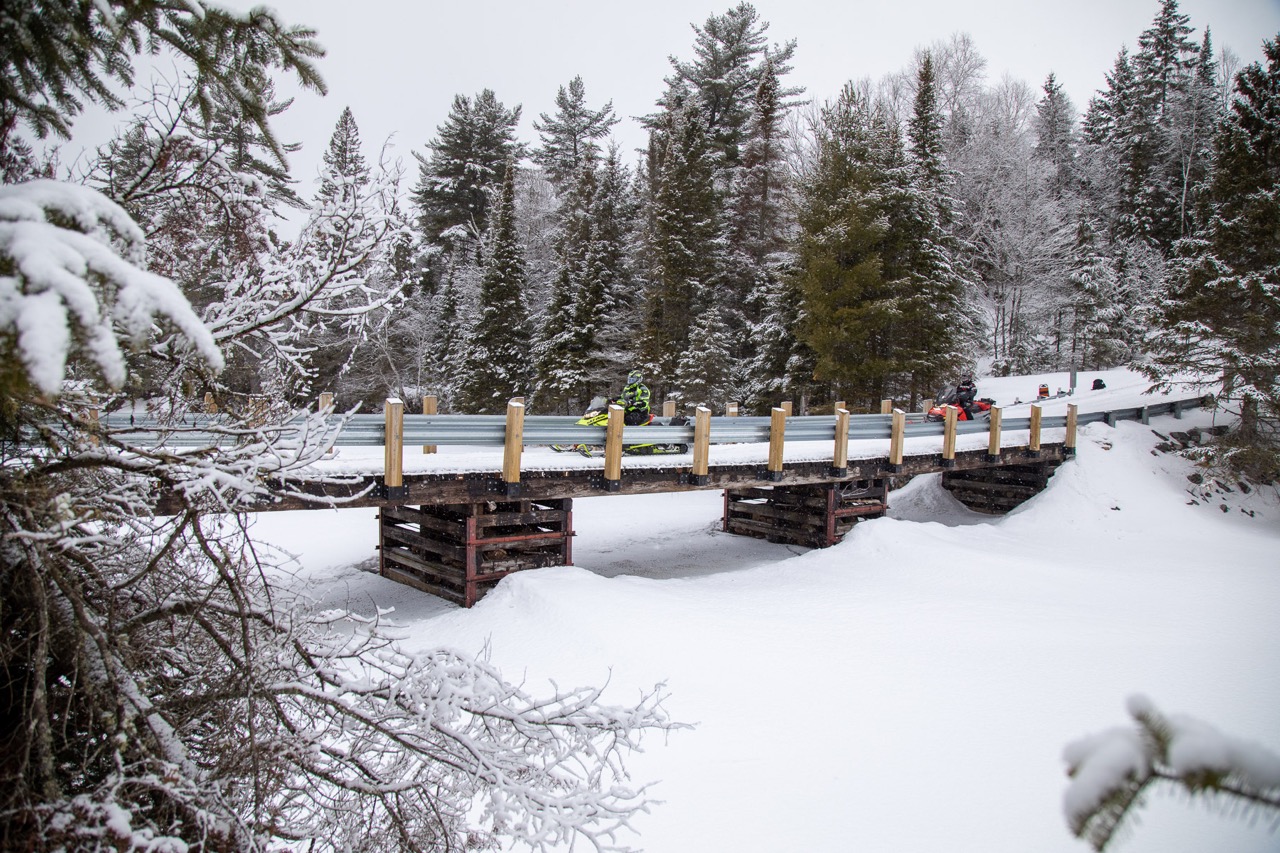
Photo by Martin Lortz for Destination Ontario
Snowmobile Insurance Buying Tips Grey Areas
So let’s now assume your sled is properly insured at a satisfactory price. That means you’re covered for every eventuality, right? Well, not exactly. Your coverage is premised on you acting in a responsible, reasonable and legal manner. If you do and the facts prove it, you are less likely to have any problems if you have to file a claim.
On the other hand, you may have issues if the snowmobiling incident you are claiming for is associated with any proven criminal action on your part. Lke impaired snowmobiling, speeding or “stunting”.
The Criminal Code of Canada lists a slew of these types of offences that can influence your insurability. “Serious” and “Major” Highway Traffic Convictions can affect not only your insurance eligibility when they appear on your driving record, but also how your insurer may handle any claim you file.
Even so-called “Minor” Convictions can have a bearing on your insurance eligibility or rating category. These include failure to carry proof of insurance, not wearing a helmet or driving on the wrong side of the road. And remember, Ontario motorized vehicle laws treat sleds and automobiles as one and the same. So any criminal conviction incurred on your sled will automatically count on your driving record.
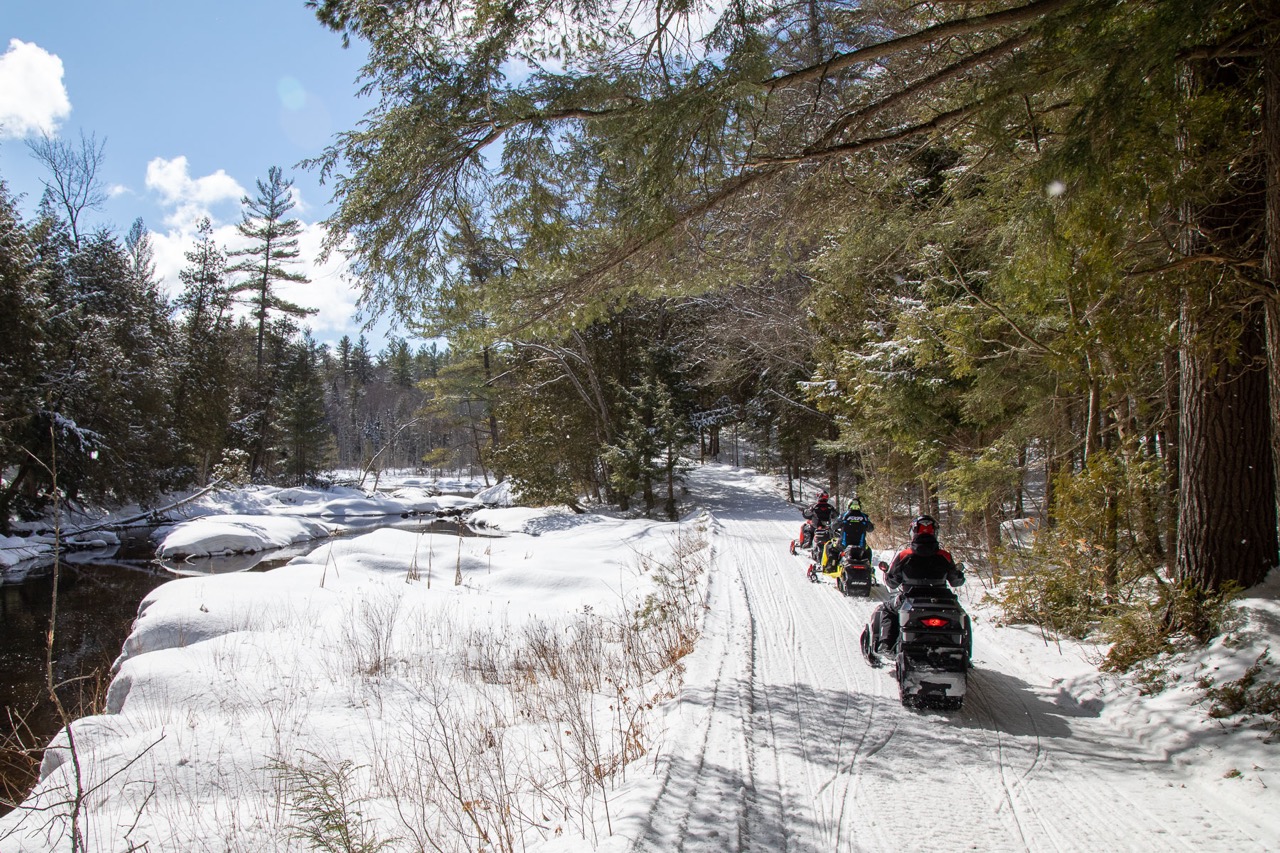
Photo by Martin Lortz for Destination Ontario
How To Avoid Making Your Claim More Difficult
But let’s assume you have a clean record and proper sled insurance. What other actions while snowmobiling can make pursuing a claim through your insurer more difficult? Consider these additional snowmobile insurance buying tips…
Transporting Your Sleds
What if an incident occurs while you are trailering your sleds and you claim for damages? Your insurer may ask some of these questions. Was your trailer overloaded? Did the weight of trailer and sleds exceed your tow vehicle’s load capacity? Did you have a properly rated tow hitch for your trailer load? Were your sleds properly and securely tied down in the trailer? Did you have proper mirrors on your tow vehicle? If the answer to any of these questions is “no”, a grey area is created. This may raise questions that slow or compromise your claim.
Transporting Fuel
It’s illegal to store or carry fuel in anything buy approved jerry cans. You must be transport jerry cans in a ventilated space, not inside an enclosed vehicle or trunk. You must also firmly secured them to prevent tipping or separating from the carrying vehicle. So what if you have an incident involving fire or explosion involving jerry cans? Yet another grey area that might impact your claim.
Locking Your Sled or Trailer
Be careful, because the legalese in some policies requires that you lock your sled and/or trailer (or in a locked enclosure) when stored or left unattended. Your claim for a stolen sled or trailer could get hung up by such small print.
Letting Anyone Else Operate Your Sled
Letting anyone operate your sled who is not an appropriately listed driver under your snowmobile policy can come back to bite you. This includes your children (worse if they are underage). Or your spouse or friends (worse if they do not have a valid driver’s licence). Your policy may not respond if your claim involves an unnamed person.
Riding With A Passenger
Although passengers don’t need to be named in your policy, if someone riding on your snowmobile with you is injured or killed, you will likely be sued. This situation could be exacerbated if the manufacturer did not make sled in question for 2-up riding.
When things go tragically wrong on the snow, all of the above examples and a few others can create these grey areas. So lawyers end up fighting over what really happened and who is at fault. And your insurer may think twice about paying up.
If this happens, there are only two certainties. One, it will be very costly to get through. And two, it will take a long time to settle. Either way, you could be way up that proverbial creek without a paddle. Especially if you haven’t bought a good sled policy with high enough liability and accident benefit limits to CYA.
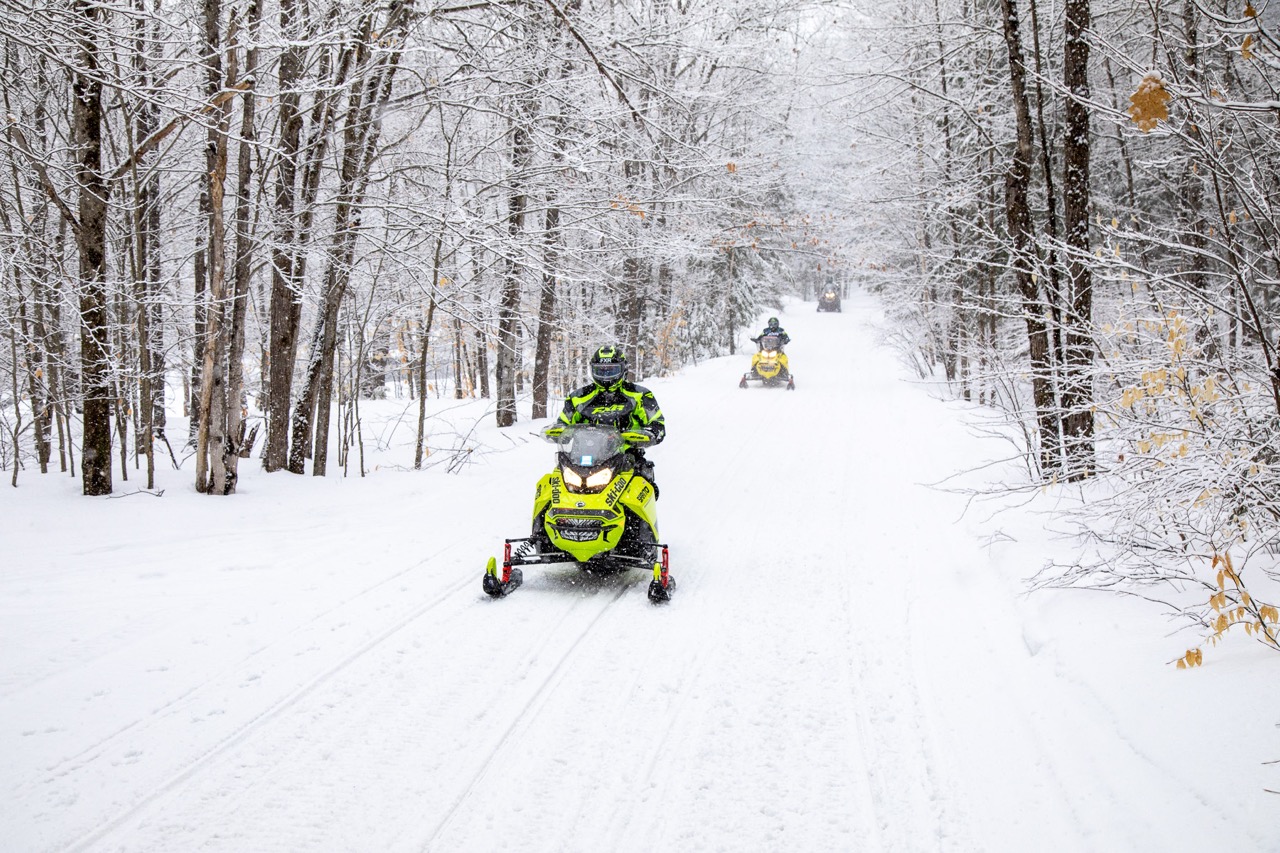
Photo by Martin Lortz for Destination Ontario
My Last Word On Snowmobile Insurance Buying Tips
I should conclude my snowmobile insurance buying tips by stating categorically that I’m no insurance expert. And that my tips and secrets are based on my own experiences. I’m providing them only to help get your snowmobile insurance buying started. I’m not intending them to replace expert advice from a qualified insurance professional.
Finally, always remember that the cost of your sled policy directly reflects who assumes the greater risk. Cheaper usually means you take more risk. More expensive, that your insurer takes more of your risk. So bottom line, my snowmobile insurance buying tips really come down to these last two questions. How much risk you are comfortable assuming yourself for a lower premium? Or, are you willing to pay more for the insurer to take more of that load?
The tips and advice in this blog are the opinions of the author, may not work in every situation and are intended only for the convenience and interest of the reader, who has the personal responsibility to confirm the validity, accuracy and relevancy of this information prior to putting it to their own use.
Like this post? Follow me on Facebook!
